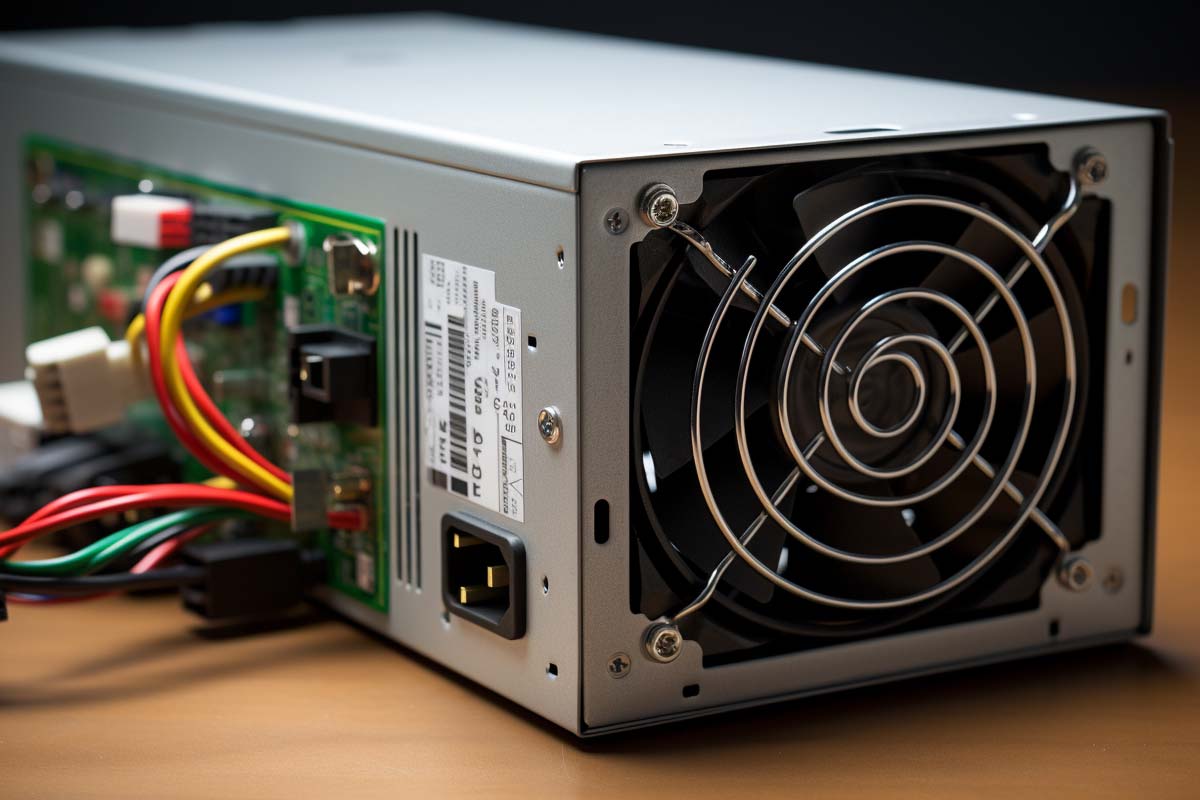Power supply problems are among the most crucial issues in computer hardware, potentially affecting every component of the system. These issues arise when the power supply unit (PSU) fails to deliver the necessary power or malfunctions.
Common Causes of Power Supply Problems
- Age and wear: Over time, PSUs can degrade and become less effective.
- Overheating: Lack of ventilation or dust buildup can lead to overheating.
- Power surges: Sudden spikes in electrical power can damage the PSU.
- Poor quality components: Low-quality or underspecified PSUs can lead to various issues.
- Physical damage: Impacts or drops can harm the PSU’s internal components.
Identifying Power Supply Problem Symptoms
Physical Signs
- No power: The computer doesn’t turn on at all.
- Random restarts: The system unexpectedly restarts or shuts down.
- Noise: Unusual sounds like buzzing or humming from the PSU.
Software Indicators
- Instability: System instability and frequent crashes.
- Performance issues: Unexplained slowdowns or freezing.
Diagnosing the Issue
Tools and Techniques
- Power supply testers: Devices that can check the functionality of a PSU.
- Multimeter tests: Using a multimeter to test the PSU outputs.
- Visual inspection: Looking for signs of damage or overheating in the PSU.
Steps for Diagnosis
- Check power connections: Ensure all cables are securely connected.
- Use a PSU tester: This can quickly indicate if the PSU is faulty.
- Test with a multimeter: For a more thorough check, use a multimeter to test voltage outputs.

IT User Support Specialist Career Path
View our comprehensive training series covering all the key elements and certifications needed to successfully excel in an IT User Support Specialist job role.
Troubleshooting and Repairing
Basic Fixes
- Cable checks: Make sure all cables are intact and properly connected.
- Cleaning: Remove dust from the PSU and ensure good ventilation.
- Resetting: Sometimes, simply unplugging and replugging the PSU can resolve minor issues.
Advanced Solutions
- **Replacing the PSU
**: If diagnostics indicate a failure, replacing the PSU is often the best solution. Choose one that matches or exceeds the original specifications.
- Upgrading PSU: For systems with added hardware, upgrading to a higher wattage PSU can provide more stability.
- Professional assessment: If unsure, have a professional evaluate the PSU and recommend actions.
Preventive Measures
Regular Maintenance
- Routine cleaning: Keep the PSU and its vents free from dust to ensure proper cooling.
- Surge protection: Use surge protectors to safeguard against electrical spikes.
- Regular checks: Periodically inspect the PSU for any signs of wear or damage.
Hardware Considerations
- Quality selection: Invest in a high-quality PSU from a reputable brand for reliability.
- Adequate power rating: Ensure the PSU is rated for your system’s power requirements, including a buffer for future upgrades.
- Proper installation: Ensure the PSU is correctly installed and ventilated within the case.

Lock In Our Lowest Price Ever For Only $14.99 Monthly Access
Your career in information technology last for years. Technology changes rapidly. An ITU Online IT Training subscription offers you flexible and affordable IT training. With our IT training at your fingertips, your career opportunities are never ending as you grow your skills.
Plus, start today and get 10 free days with no obligation.
Conclusion
Summary and Final Thoughts Power supply issues can be complex, but understanding the symptoms, diagnosis, and solutions is crucial for maintaining a stable and functional computer system. Regular maintenance and using quality hardware are key to preventing PSU-related problems.
Frequently Asked Questions About Power Supply Issues
How do I know if my computer’s power supply is failing?
Key signs include the computer not turning on, random restarts or shutdowns, unusual noises from the power supply unit, and general system instability or performance issues.
Can a faulty power supply damage other computer components?
Yes, a malfunctioning power supply can potentially damage other components by providing irregular or insufficient power, leading to overvoltage or undervoltage situations.
What should I do if I suspect my power supply is the problem?
Initially, check all cable connections for security and damage. Use a power supply tester or multimeter to check the PSU’s functionality. If you’re not comfortable doing this, consult a professional.
How do I choose the right replacement power supply for my computer?
Select a PSU that matches or exceeds the wattage requirement of your system. Consider factors like physical size, connector availability, efficiency rating, and brand reputation.
Is it safe to repair a power supply unit by myself?
Repairing a PSU can be dangerous due to the high voltages present, even when unplugged. It is generally safer and more cost-effective to replace a faulty PSU rather than attempt to repair it, unless you have specific expertise in electronics.
























